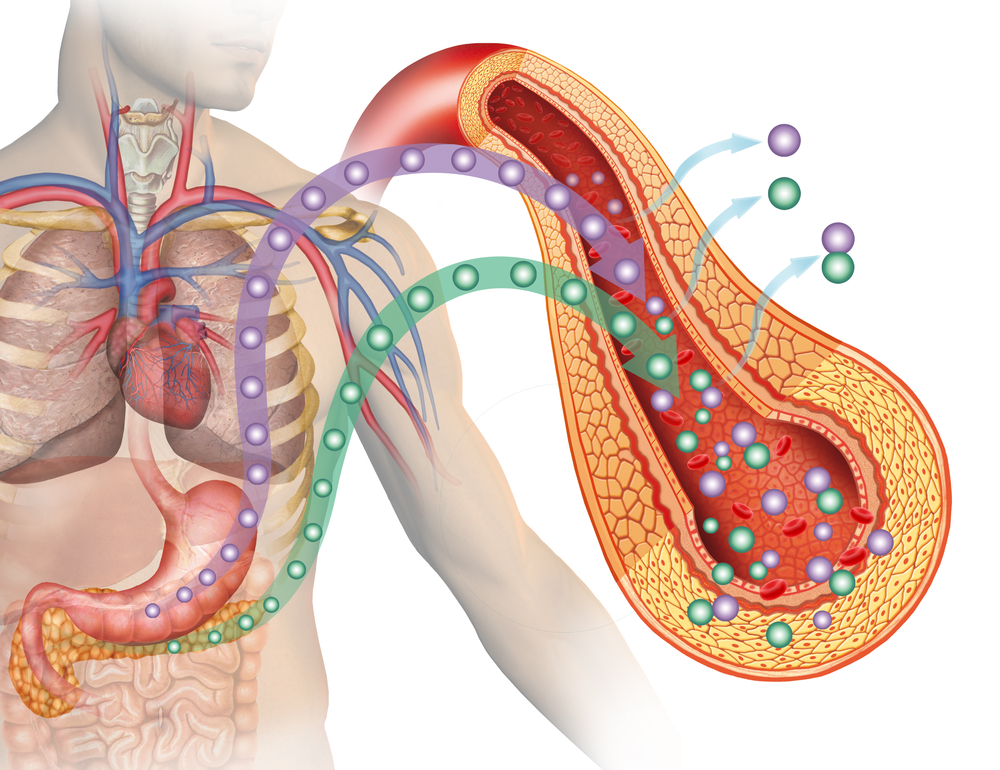Insulin is a very important hormone that regulates several bodily functions. The possible problems with it are at the very core of numerous so-called diseases of modern times.
Insulin resistance is a very common condition in which cells stop “responding” to insulin. In the United States, almost 1/3 of the population has this form of disorder, and depending on the criteria for defining it, this figure can be significantly higher.
According to research on this topic, as many as 33% of children and adolescents who experience obesity have insulin resistance. So, obesity is a serious risk factor.
Despite these worrying numbers, the simplest lifestyle changes can dramatically help prevent and improve this condition.
In this article, you can read everything you need to know about insulin, insulin resistance, and lifestyle changes that are beneficial for this disorder.

Table of Contents
Insulin
Insulin is a hormone secreted by the pancreas. Its main role is to regulate the amount of nutrients circulating in the bloodstream.
Although commonly associated with blood sugar control, this hormone also plays a role in fat and protein metabolism.
When you have a carbohydrate meal, your blood glucose level will rise over a short period. The cells of the pancreas have a mechanism by which they can “feel” this, after which they secrete insulin into the bloodstream.
Insulin signals the cells that they need to receive sugar from the blood. This process results in reduced glucose levels. Constantly high blood sugar levels are especially harmful in many ways, and extremely high ones can cause serious damage and even be life-threatening.
Insulin resistance
When cells stop responding properly to “stimuli” from insulin, it is called insulin resistance. Under such conditions, the pancreas begins to secrete even more insulin in an effort to lower blood sugar. This leads to high levels of insulin in the blood, a condition called hyperinsulinemia.
Over time, the cells’ resistance to insulin can increase, causing high levels of sugar and insulin in the bloodstream. Eventually damage to the pancreas and consequently reduced insulin production can occur.
Insulin resistance is the most common cause of type 2 diabetes, a disease that affects up to 10% of the world’s population, but also for gestational diabetes and prediabetes – also quite common diseases.
Resistance vs Sensitivity
Insulin resistance and insulin sensitivity are two sides of the same coin.
If you have insulin resistance, you have reduced insulin sensitivity and vice versa.
Unlike resistance, insulin sensitivity is positive.
What causes insulin resistance?
Many factors can contribute to the development of insulin resistance. The disturbed lipid profile is considered to be one of the main ones. Numerous studies show that high levels of free fatty acids in the bloodstream lead to insulin resistance.
The main cause of impaired lipid profile (cholesterol and triglycerides) is improper diet – unhealthy foods, overeating, obesity, etc.
Excess fat in the cells also leads to an increased risk of resistance. However, insulin resistance is not necessarily related to obesity, it can also affect people with a normal BMI.
Other risk factors:
- Fructose – A diet high in fructose (from added sugars, not fruit) has been linked in a number of studies to insulin resistance.
- Inflammation – Increased oxidative stress and chronic inflammation can lead to this condition
- Inactivity – physical activity increases insulin sensitivity, while inactivity has the opposite effect.
- Impaired intestinal microflora – There has been evidence that impaired intestinal microflora may contribute to inflammation that contributes to insulin resistance and other metabolic disorders.
- Genetic factor
Symptoms
Initially, insulin resistance has no symptoms. Symptoms begin with significant increases in blood glucose and include:
- Chronic fatigue
- Constant feeling of hunger and thirst (even immediately after meals)
- Impaired concentration
- Frequent urination
- Frequent infections
- Impaired lipid profile
If you know that you are in a risk group (obesity, overweight, fat in the abdomen), you should check your blood sugar level more often.
In addition to diabetes and metabolic syndrome, insulin resistance has been linked to heart disease.
According to research, people with insulin resistance or metabolic syndrome have a 93% higher risk of cardiovascular disease.
Other diseases related to resistance: non-alcoholic fatty liver, polycystic ovary syndrome, Alzheimer’s, malignant diseases, etc.
Lifestyle changes – the first line of prevention and treatment of insulin resistance
Even the simplest changes of bad habits can significantly help in this condition, but what is perhaps more important – in its prevention. According to the experiences and researches, even reversibility is possible, ie complete cure of resistance, by following healthy living habits. First of all, we mean:
- Regular physical activity
- A healthy way to lose weight
- Quit smoking
- Reduced intake of processed foods
- Intake of foods rich in omega 3 fatty acids
- Good sleep hygiene
- Blood donation – high levels of iron in the blood are associated with insulin resistance.
- Some supplementation – of course, in consultation with a doctor.
Some research also suggests that intermittent fasting may help with insulin resistance.
So, following healthy lifestyles, which is crucial for general health, ie for minimizing the risk of a number of chronic diseases is also crucial in dealing with insulin resistance.
